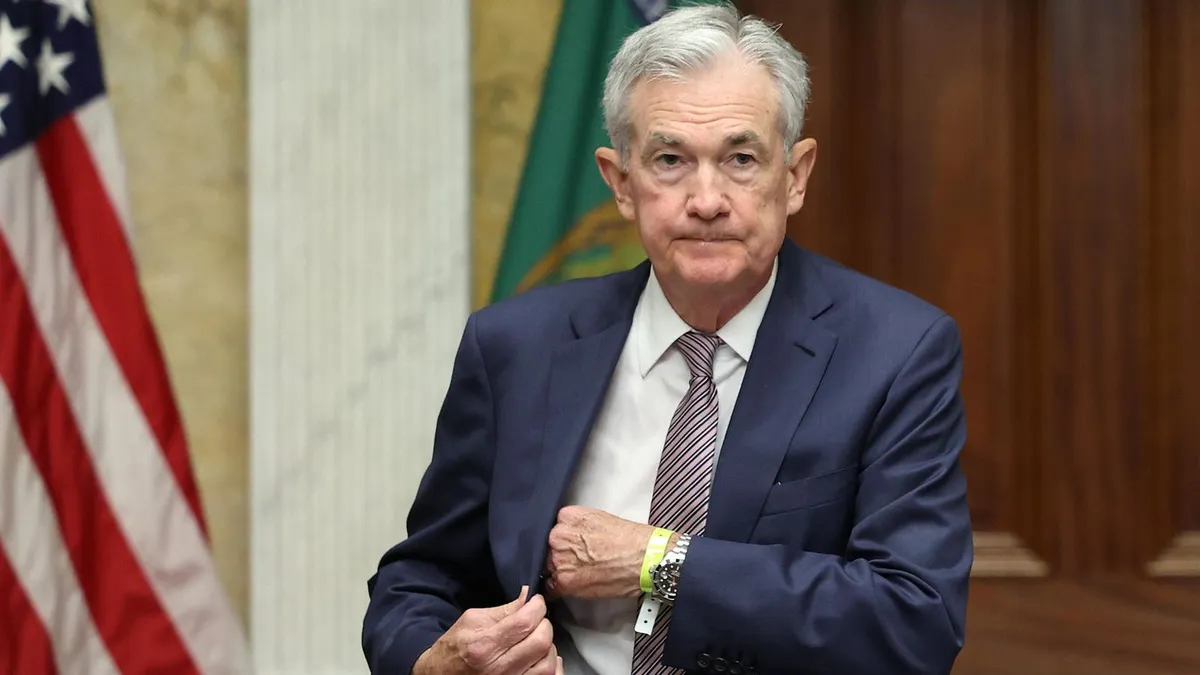
The upcoming Federal Open Market Committee (FOMC) meeting in May is garnering attention, but Bank of America economists, led by Aditya Bhave, have characterized it as a "placeholder." This statement highlights the cautious approach that many analysts believe the Federal Reserve will take in light of current economic conditions and political pressures.
This week’s FOMC meeting comes on the heels of President Donald Trump’s vocal criticisms of Federal Reserve Chair Jerome Powell. In recent weeks, Trump has expressed frustration over Powell's reluctance to cut interest rates, labeling him as "Mr. Too Late," a "total stiff," and a "major loser." These remarks reflect Trump's ongoing demand for lower borrowing costs to stimulate economic growth. Although Trump has reportedly considered firing Powell, legal uncertainties surrounding such a move may have led him to back off.
As Powell prepares to face the press, analysts predict he will likely have to navigate questions regarding Trump's harsh remarks. Powell has previously affirmed his belief that the president lacks the legal authority to dismiss him before the end of his term in 2026. However, he has not directly addressed Trump's latest criticisms. Michael Feroli, chief U.S. economist at J.P. Morgan, suggests that Powell may opt for a non-commentary approach, stating, "It’s likely that he’ll have to field some questions about the president’s remarks about the Fed."
The Federal Reserve plays a crucial role in shaping U.S. monetary policy, primarily influencing the target federal funds rate, which affects borrowing costs for businesses and consumers. Higher interest rates tend to decelerate economic growth as companies become more cautious with spending due to increased borrowing expenses. Conversely, lower interest rates generally encourage economic activity as they make loans more affordable.
The Fed operates under a dual mandate to maintain manageable inflation and ensure robust employment levels. Over the past few years, the inflation aspect has taken precedence, especially after the inflation rate soared to a four-decade high in 2022. Although inflation has shown signs of moderation, the Fed's preferred inflation measure was recorded at 2.8% in March, still above the central bank's target of 2%. Economists predict that tariffs may contribute to rising consumer prices in the near future.
The labor market remains resilient, with the U.S. economy adding a surprising 177,000 jobs last month, maintaining an unemployment rate of 4.2%. Looking ahead, Powell is expected to convey that the Fed staff is "well positioned to wait for greater clarity before making any changes to policy." Nonetheless, market expectations suggest that the Fed may cut rates later this year, with traders indicating a 99.6% probability of a cut by 2025.
Goldman Sachs' chief U.S. economist, David Mericle, indicated that even high inflation might not prevent the Fed from considering rate cuts, particularly if evidence emerges that the "tariff shock" is adversely impacting the economy. Key indicators that could prompt the Fed to lower rates include significant increases in unemployment, weak job growth, and declines in capital goods orders, which reflect corporate spending levels. Goldman forecasts a potential rate cut of 25 basis points during the July, September, and October meetings, leading to a target federal funds rate between 3.5% and 3.75%.
For those interested in exploring this topic in more depth, consider reading Forbes articles such as “Can Trump Fire Jerome Powell? Federal Reserve Chair Thinks No As President Reportedly Eyes His ‘Termination.’” Additionally, another insightful piece discusses how the U.S. economy shrank during the first quarter of 2025 as GDP slipped by 0.3%. This backdrop sets the stage for a critical FOMC meeting as economic indicators and political dynamics continue to evolve.